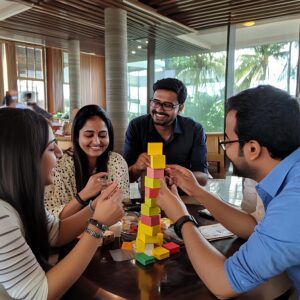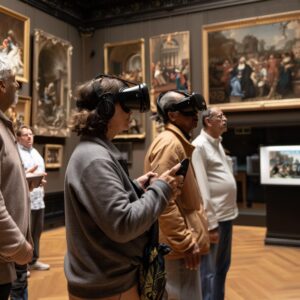Designing Booths for Hybrid and Virtual Exhibitions
The exhibition industry is rapidly evolving, and the rise of hybrid and virtual formats has redefined how brands connect with their audiences. In today’s digital-driven world, booth design must go beyond physical presence — it should create an experience that seamlessly engages both in-person and online visitors. Designing booths for hybrid and virtual exhibitions requires a blend of creativity, technology, and strategy to ensure maximum visibility and interaction across all platforms.
Blending Physical and Digital Experiences
In hybrid exhibitions, the booth must serve as both a live showcase and a digital engagement hub. Integrating technology like LED screens, touch displays, and live-streaming setups helps bridge the gap between on-ground and virtual audiences. Physical booths can feature QR codes linking to virtual tours, product demos, or real-time chats, allowing online visitors to explore the same content as those attending in person. This blend of physical and digital design ensures that every visitor — whether onsite or remote — enjoys a unified brand experience.
Creating Immersive Virtual Booth Designs
Virtual booths should replicate the interactivity of physical ones. Using 3D visualization and interactive platforms, exhibitors can create immersive digital spaces that mirror their real-world setups. Visitors can navigate through virtual environments, view product models, download brochures, and even interact with company representatives through chat or video calls. Customizing these virtual booths with brand colors, logos, and engaging visuals helps maintain consistency and strengthen brand identity across platforms.
Enhancing Engagement with Technology Integration
Engagement is the cornerstone of successful hybrid and virtual exhibitions. Incorporating features like live Q&A sessions, webinars, virtual product launches, and gamified experiences keeps participants actively involved. Technologies such as augmented reality (AR) and virtual reality (VR) can also transform how products are presented, allowing visitors to experience them in a lifelike way. Data analytics tools further help exhibitors measure engagement, track visitor behavior, and refine their strategies for future events.
Conclusion
Designing booths for hybrid and virtual exhibitions is about creating meaningful connections that transcend physical boundaries. By blending digital innovation with thoughtful design, exhibitors can reach wider audiences, deliver personalized experiences, and amplify their brand impact. As the line between physical and virtual events continues to blur, the future of exhibitions lies in versatile, tech-enabled booth designs that engage, inform, and inspire — anytime, anywhere.














Post Comment